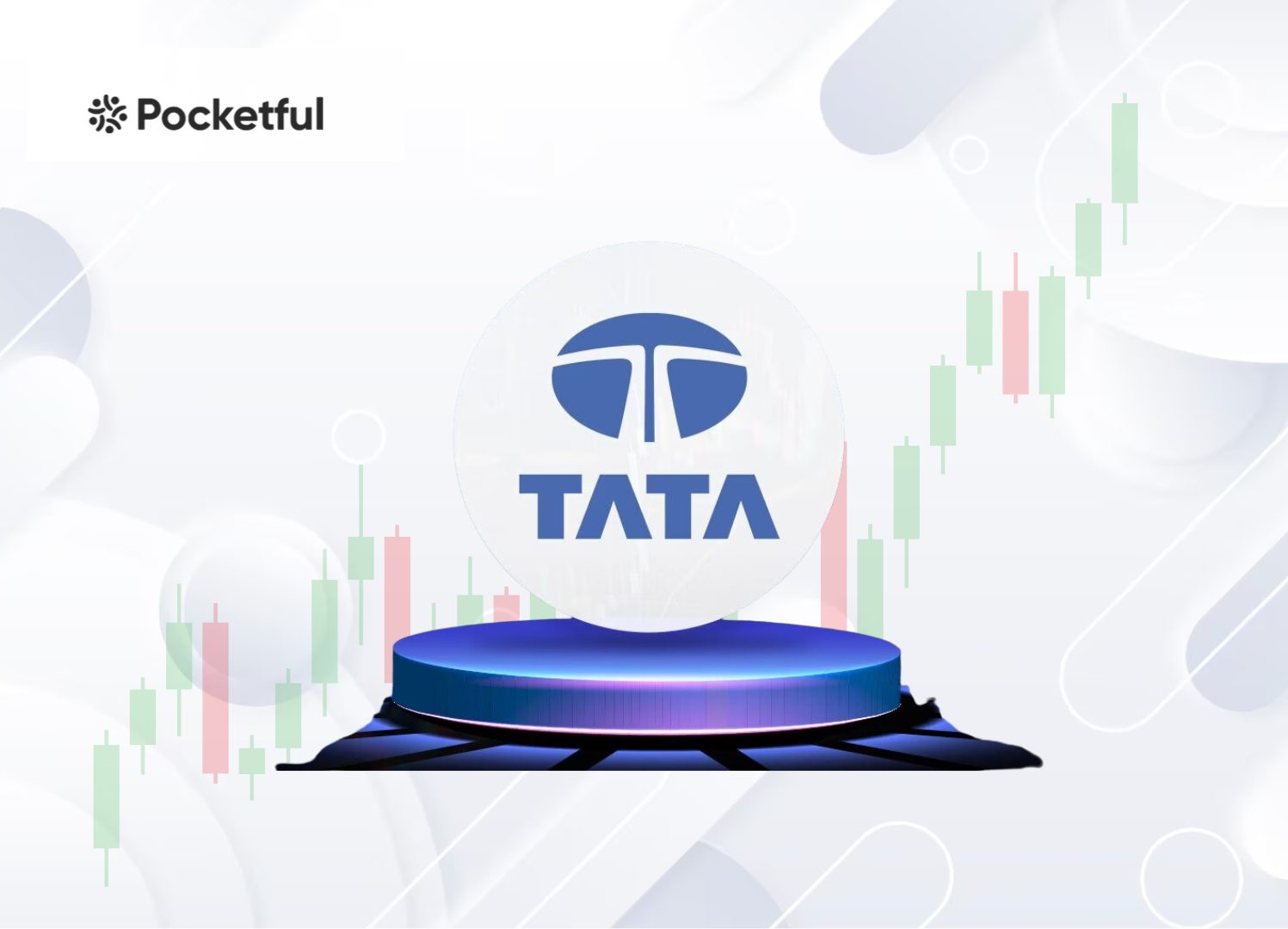Rakesh Jhunjhunwala, often referred to as the ‘Warren Buffet of India,’ deeply impacted the Indian stock market with his insightful investments and financial skills. Although he is mainly known for his large-cap investment strategies, his investing strategy also included finding small, undervalued companies poised for remarkable growth.
In this blog, we will discuss Jhunjhunwala’s penny stocks, which are low-priced stocks he has invested in based on his value investing principles.
What Is Rakesh Jhunjhunwala Penny Stock?
A “Rakesh Jhunjhunwala penny stock” usually means a low-priced stock (under ₹100) in which Rakesh Jhunjhunwala has invested. He focused on large-cap stocks and mid-cap stocks, but he also invested in smaller companies that were undervalued and later experienced high growth.
Best Rakesh Jhunjhunwala Penny Stock
| Company | Current Market Price (in ₹) | Market Capitalization (in ₹ Cr.) | 52-Week High (in ₹) | 52-Week Low (in ₹) |
|---|---|---|---|---|
| Singer India Ltd. | 91.6 | 565 | 98.0 | 49.0 |
An overview of the Rakesh Jhunjhunwala penny stock is given below:
1. Singer India Ltd.
Singer India is a well-known maker of sewing machines and various home appliances. The company is affiliated with the recognized Singer brand and was founded by Sir Isaac Merritt Singer.
The company commenced its operations in India in 1977, with its headquarters in New Delhi, and has evolved significantly over time, from specializing in sewing machines alone to expanding its product portfolio to other home appliances, such as mixer grinders, food processors, and irons.
A trusted brand providing advanced-built products to enhance day-to-day life, Singer India embraces innovation and manufactures high-quality products while striving for customer satisfaction.
Know the Returns:
| 1Y Return (%) | 3Y Return (%) | 5Y Return (%) |
|---|---|---|
| -2.10% | 14.05% | 207.47% |
Other Lowest-Priced Rakesh Jhunjhunwala Stocks
| Company | Current Market Price (in ₹) | Market Capitalization (in ₹ Cr.) | 52-Week High (in ₹) | 52-Week Low (in ₹) |
|---|---|---|---|---|
| Canara Bank | 115 | 1,04,675 | 119 | 78.6 |
| Geojit Financial Services | 77.0 | 2,142 | 154 | 60.7 |
| Federal Bank | 198 | 48,770 | 220 | 173 |
An overview of the above companies is given below:
1. Canara Bank
Canara Bank is a leading public sector bank in India with headquarters in Bangalore, Karnataka. The bank was founded in 1906 by Sri Ammembal Subba Rao Pai, a great visionary and philanthropist. As of September 2024, Canara Bank has over 11.53 crore customers, 9,658 branches and 12,191 ATMs across the country.
Canara Bank, along with 13 other major banks in India, was nationalized to enhance government control over the banking sector. It has a strong international presence with branches in London, New York, and Dubai.
Know the Returns:
| 1Y Return (%) | 3Y Return (%) | 5Y Return (%) |
|---|---|---|
| 9.84% | 136.36% | 477.20% |
2. Federal Bank
Federal Bank Ltd. is a leading private Indian bank with its headquarters in Kerala. It was established on 23 April 1931 as Travancore Federal Bank Ltd. near Thiruvalla. Initially, the bank started auction-chitty and other banking transactions tied to agriculture and industry. By complying with the Banking Regulation Act of 1949, the bank was renamed Federal Bank in 1949. The bank is listed on the Bombay Stock Exchange, the National Stock Exchange of India and the London Stock Exchange. Having a significant international footprint, the bank has remittance arrangements with more than 110 banks/exchange companies around the world and has offices in Abu Dhabi and Dubai.
Know the Returns:
| 1Y Return (%) | 3Y Return (%) | 5Y Return (%) |
|---|---|---|
| 7.63% | 63.23% | 272.23% |
3. Geojit Financial Services
Established in 1987 by CJ George and Ranajit Kanji Lal, Geojit Financial Services Ltd. is among the leading investment service providers, with headquarters in Kochi, Kerala. It was originally started as a partnership under the name M/s George and Co. Later, it was rebranded as Geojit and Co.
Geojit was the first company to commence online trading in February 2000, which provided clients with real-time access to stock markets. Besides, it introduced franchise models for sub-broking to expand their business throughout the country.
Know the Returns:
| 1Y Return (%) | 3Y Return (%) | 5Y Return (%) |
|---|---|---|
| -45.77% | 72.25% | 119.41% |
Read Also: Ashish Kacholia Penny Stocks
Benefits of Investing in Rakesh Jhunjhunwala Stocks
There are multiple reasons why retail and institutional investors find stocks from Rakesh’s portfolio an attractive investment option.
- Credibility: Jhunjhunwala developed the strategy to identify undervalued stocks, making it easier to identify some of the best growth stocks in India. Titan, Lupin, and Crisil are prime examples of such investments. His investments were backed by strong business models and company fundamentals.
- Confidence in market trends: Analysis of Rakesh’s investments gives insights into emerging industries and market trends. His choices included those growing sectors such as financial services, pharma, and technology.
- Long-Term Views: Rakesh’s buy right, sit tight philosophy focuses on the principle of patience for long-term wealth creation, guiding retail investors to pursue a disciplined investment process.
Risks of Investing in Rakesh Jhunjhunwala Stocks
Investing solely based on his portfolio can be risky. It is essential to take into account individual financial objectives, risk tolerance, and changing market conditions while investing. Risks associated with investing in Rakesh Jhunjhunwala stocks are:
- Volatility and Speculation: Penny stocks can be highly volatile and can experience significant price changes in short periods. This makes them vulnerable to speculative trading and market manipulation, affecting investor confidence.
- Low Liquidity: Many penny stocks have low trading volume, making it difficult to buy or sell shares without impacting the price. This increases the risk of being unable to exit an investment at a favorable moment.
- Insufficient Information: Smaller companies generally offer less financial information and have fewer analysts following them. This makes it tough to analyze their real value or potential, raising the risk of investing in failing businesses.
Future of Rakesh Jhunjhunwala penny stocks
Numerous penny stocks in developing industries, including technology, consumer goods, and infrastructure, were backed by Jhunjhunwala. These stocks stand to benefit greatly from strong demand and scaling prospects as these sectors expand in a fast-expanding nation like India.
Those penny stocks that have strong fundamentals, good cash flows, a solid market presence, and set strategies for growth are more likely to someday evolve into mid-cap or even blue-chip stocks. This was quite in line with Jhunjhunwala’s philosophy of value investment.
Changes in regulation or technology might benefit certain industries, which, in turn, would have a positive effect on their stock price. Essential sectors such as renewable energy and solutions driven by technology are poised for long-term growth.
Read Also: Best Tata Group Penny Stocks in India
How to Invest in the Rakesh Jhunjhunwala Penny Stocks?
Investing in penny stocks based on Rakesh Jhunjhunwala’s strategies requires careful planning and execution. The steps involved are below.
- Find potential penny stocks: Look for stocks under ₹100 that have strong growth potential. Use financial tools or brokerage platforms to filter stocks based on market capitalization, profitability, and industry trends. Seek companies with experienced management, scalability, and a clear growth plan.
- Understand the sector: Rakesh Jhunjhunwala identified opportunities in growing industries like retail, pharma, infrastructure, etc. Analyse industry trends and the company’s competitiveness in its sector.
- Analyse financial Statements: Examine the balance sheet, profit margins, debt levels, and cash flows to assess the company’s financial health. Review past performance, growth potential, and dividend history, if any. Avoid companies with ongoing losses or lack of clear financial information.
- Review the stock’s liquidity: Check the average trading volume to confirm that you can easily enter and exit positions. Avoid stocks with very low liquidity, as they can tie up your investment.
- Fix a Budget: Invest a small part of your portfolio in penny stocks because they are very risky. Adopt a diversified investment strategy to manage risk across different asset classes.
- Embrace a long-term vision: Penny stocks can provide quick returns, but they often need a long-term investment approach to reach their full potential. You must be ready for market fluctuations in order to realize multi-bagger gains.
Conclusion
Rakesh Jhunjhunwala’s story shows the power of a sound investing strategy. Penny stocks can give big payoffs but come with more risks. Jhunjhunwala’s way of investing tells us about his path to success. It’s about patience, deep analysis, and fully believing in your investment choices. It does not matter if you are a seasoned investor or a beginner; his investment approach can guide you in the penny stocks world. However, it is advised to consult a financial advisor before investing.
| S.NO. | Check Out These Interesting Posts You Might Enjoy! |
|---|---|
| 1 | Best Smallcap Stocks in India |
| 2 | Best Smallcap Defence Stocks in India |
| 3 | Best Smallcap IT Stocks in India |
| 4 | Best Smallcap Semiconductor Stocks in India |
| 5 | Best Small Cap Electric Vehicle Stocks |
Frequently Asked Questions (FAQs)
Why are penny stocks risky?
Penny stocks are generally high-risk and speculative as they are often illiquid, volatile, and have very little financial data available.
What should investors look for in penny stocks?
Experienced management, solid financials, scalability, industry trends, and competitive advantage are key factors investors should look at before investing in penny stocks.
Can penny stocks give high returns?
Yes, some penny stocks hold exponential growth potential, but the majority of them carry high risk.
Which stocks are Rakesh Jhunjhunwala penny stocks?
No, not all low-price stocks are penny stocks. A company’s market capitalization and fundamentals also matter.
What was Jhunjhunwala’s philosophy in investing?
His approach focused on finding undervalued companies with strong fundamentals and holding them for the long term to realize substantial returns.










